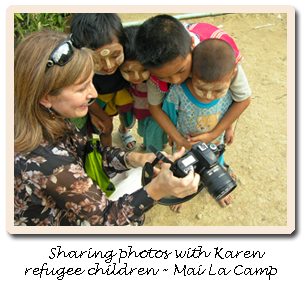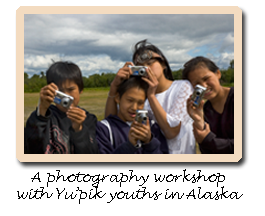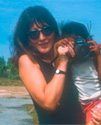About
 J. Sara Klatchko
J. Sara Klatchko
specialises in documenting the stories, cultures and situations of children/families across the world. Her work covers complex social issues, while incorporating the rich details of ordinary life. She works/partners with international development agencies, the media, advocacy organizations, universities and museums.
American-born, she has lived in Barcelona, England, Australia and Hong Kong, where she worked as an English teacher, translator, documentary filmmaker and photojournalist. Her specific theme-based stories of children are often produced in collaboration with various organizations/individuals across the world, including non-profit humanitarian groups, universities and museums. Her work has been exhibited in solo museum shows, and featured on NPR/PBS, and broadcast on the BBC World Service. She has spoken at various conferences about using photography to bring international content into the curriculum; developed professional development seminars for teachers, and workshops for young people/schools.
The Photographic Journey
has taken JSK to over 40 countries. From Nicaragua to Namibia, Australia to Argentina, her photographs show how children are defined by tradition and customs; affected by specific global concerns, and connected by shared universal needs: for protection, clean water, education, healthcare and the chance to be a child. The diversity of her work  encompasses Saami children in Lapland, Aboriginal children in Australia, suburban youths in America, landmine victims in Cambodia, AIDS orphans in Uganda, refugees in Hong Kong. The rance of disparity captured, from comfort to poverty, from scarcity to abundance, encourages viewers – of all ages – to think more deeply about the world inhabited by these children – and the kind of world they themselves inhabit.
encompasses Saami children in Lapland, Aboriginal children in Australia, suburban youths in America, landmine victims in Cambodia, AIDS orphans in Uganda, refugees in Hong Kong. The rance of disparity captured, from comfort to poverty, from scarcity to abundance, encourages viewers – of all ages – to think more deeply about the world inhabited by these children – and the kind of world they themselves inhabit.
World Curriculum
The photographs/stories help young people better understand the situations/cultures of children across the world, while tying into core curriculum subjects. A series of interactive digital educational materials were developed through a partnership with MAGPI/University of Penn. The visual literacy method underpinning the educational materials help young people to read the photographs – connecting the cross-cultural with the cross-curricular.


